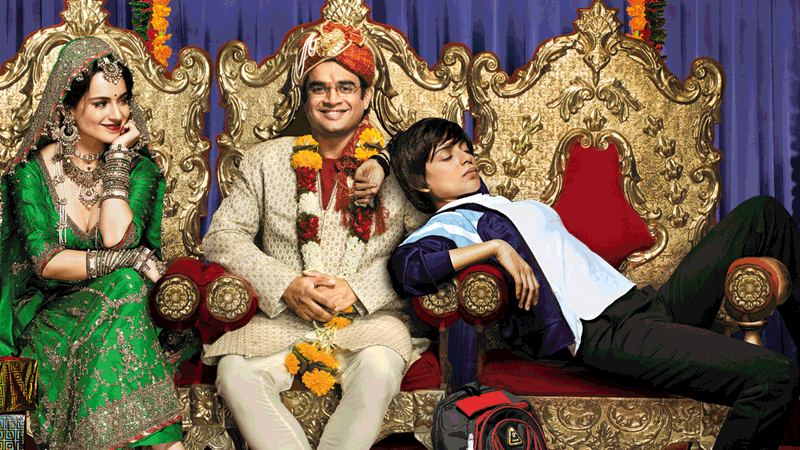
The battle for India’s OTT heart has just begun. Vanita Kohli-Khandekar looks at the players, the climate, the looming clashes, the natural advantages and the curveballs.
The rush of entertainment brands into the Indian OTT market is really something.
21st Century Fox subsidiary, Star India, launched hotstar, a mobile TV app in February this year. Then came Singtel’s Hooq in partnership with Sony and Warner in May. Soon after that, in June, came news reports that Netflix would be launching an India service in 2016. In the same month, Eros International, India’s largest film studio, was forced by shareholders to drop plans for a TV business and focus on ErosNow, its streaming service. Viacom18, a joint venture between Viacom and Network18 announced a digital venture that insiders reckon will launch by the end of the year. And the others already here – Google’s YouTube, Zee’s Ditto TV, Multi-Screen Media’s Sony Liv and Facebook, among others. (see table)
“The rising number of Indians online and within that the ability of the mass of Indians to access the internet on smartphones that are Rs5,000/US$76 and less is driving growth,” says Gaurav Gandhi, chief operating officer, Viacom18 Digital Ventures.
There are more than 300 million Indians online today and more than 970 million of them have a mobile phone. Of consumers online, about 100 million people watch video online. While revenues remain low, they are expected to increase from US$187 million in 2014 to US$550 million in 2018, says consulting firm Media Partners Asia (MPA). This includes both advertising and subscription revenues.
The other major push comes from the impending launch of 4G from Reliance and Airtel and the impetus this could give the market. “The real party will start when net penetration hits 400-500 million,” Gandhi says.
The heads of most media and entertainment firms agree.
“In five to seven years, 50% of our revenues could come from ErosNow and the digital initiatives, at greater margins,” says Jyoti Deshpande, managing director/group chief executive officer, Eros International, India’s largest film company.
ErosNow has three different se...
The battle for India’s OTT heart has just begun. Vanita Kohli-Khandekar looks at the players, the climate, the looming clashes, the natural advantages and the curveballs.
The rush of entertainment brands into the Indian OTT market is really something.
21st Century Fox subsidiary, Star India, launched hotstar, a mobile TV app in February this year. Then came Singtel’s Hooq in partnership with Sony and Warner in May. Soon after that, in June, came news reports that Netflix would be launching an India service in 2016. In the same month, Eros International, India’s largest film studio, was forced by shareholders to drop plans for a TV business and focus on ErosNow, its streaming service. Viacom18, a joint venture between Viacom and Network18 announced a digital venture that insiders reckon will launch by the end of the year. And the others already here – Google’s YouTube, Zee’s Ditto TV, Multi-Screen Media’s Sony Liv and Facebook, among others. (see table)
“The rising number of Indians online and within that the ability of the mass of Indians to access the internet on smartphones that are Rs5,000/US$76 and less is driving growth,” says Gaurav Gandhi, chief operating officer, Viacom18 Digital Ventures.
There are more than 300 million Indians online today and more than 970 million of them have a mobile phone. Of consumers online, about 100 million people watch video online. While revenues remain low, they are expected to increase from US$187 million in 2014 to US$550 million in 2018, says consulting firm Media Partners Asia (MPA). This includes both advertising and subscription revenues.
The other major push comes from the impending launch of 4G from Reliance and Airtel and the impetus this could give the market. “The real party will start when net penetration hits 400-500 million,” Gandhi says.
The heads of most media and entertainment firms agree.
“In five to seven years, 50% of our revenues could come from ErosNow and the digital initiatives, at greater margins,” says Jyoti Deshpande, managing director/group chief executive officer, Eros International, India’s largest film company.
ErosNow has three different services that offer its library of 3,000 films and latest hits such as Tanu Weds Manu Returns. There is an ad-supported free streaming model. Then there is a day pass or a weekend pass for those who want to dip in and out without ads. And a paid model with different tiers – the premium one at Rs50/US$0.76 a month gives access to the entire content completely ad free. The Rs100/US$1.50 a month option comes with additional features such as high-definition, portability across devices and offline caching.
On the other hand, there is Zee’s completely subscription driven Ditto TV.
Zee Digital Convergence chief executive, Debashish Ghosh, says Ditto TV should double revenues to US$12 million next year.
Hotstar is already getting advertisers to pay more for reaching OTT audiences.
So the green shoots of growth are everywhere.
How does YouTube view all this? India is one of its largest markets at 70 million users and an estimated US$95 million-US$126 million in ad revenues (based on Google’s India revenues, YouTube’s traffic, fill rate and other variables since Google refuses to comment on the number).
By next year, this is likely to exceed US$156 million. By Indian standards that makes it a medium-scale broadcaster pitching it, perceptually, against the very firms that it sources content from.
Almost all the firms launching on their own now – Star, Zee, Viacom18, Eros – have been on the list of YouTube’s top video destinations in India for a long time. Many are now reducing their engagement with YouTube.
“We were one of the first Indian entertainment companies to embrace YouTube. We average close to 100 million video views per month and have over 3.2 million subscribers,” Deshpande says. “But the YouTube monetisation model at low CPM rates makes it a less premium destination and more like a video search platform mainly for short form content,” he adds.
“YouTube is no longer our go-to platform for launching trailers and songs. We break these exclusively on ErosNow and heavily market them. YouTube still remains a powerful marketing tool but not our vehicle for monetisation strategy,” Deshpande adds.
Others echo that. Star, for instance, has long questioned the rationale of putting its premium, professionally generated content next to YouTube’s low-end user-generated content.
Ajay Vidyasagar, regional director, YouTube Partnerships, APAC, is alright with this thinking. He reckons that, “YouTube is like a multi-brand supermarket for content. It is not uniquely dependent on any one player. A bulk of the owned-and-operated platforms in India continue to have solid partnerships with us today. People will want to build their own platforms, but that does not limit their ability to be on other platforms. Most of us realise that we need a fertile ecosystem to realise value,” he says.
MPA executive director, Vivek Couto, agrees. He reckons that the battle is not between Eros (or any other firm) and YouTube. “The video industry in Asia Pacific over the next three to five years will be about two parallel ecosystems that could collide or coexist,” he says.
This means that the US$7.5 billion Indian TV industry that reaches 800 million people and the US$187 million online video one reaching 100 million Indians will be battling for audience time and advertiser money.
The fight will be largely about ad money for a longish while, analysts reckon. “In the U.S., people spend a lot of money on cable at US$90 and Netflix disrupted that by coming in at US$8,” Couto says.
In India, at US$3-US$4, average cable prices are very low anyway.
This puts a big question mark on subscription revenues. Ditto TV, with a respectable 1.8 million subscribers paying an average of US$0.80 a month, is a rare example of a pay service in India.
That leaves advertising. The scramble for share of audience and advertising revenue here is intense. While hotstar’s entry has pushed up online video ad rates, they still hover only between US$6.30-US$9.50 for a thousand viewers against two, maybe three times that much for TV.
In the ad market, the big entertainment networks – Star, Zee, Sony, Eros – have a natural advantage. Either because they have 30 channels and original content creating machinery trained to deliver hits, or through sheer volume and control over film titles, such as Eros.
This is, however, not just about size. These companies are simply better equipped to serve popular content. And in spite of all the blah blah about user generated content, the fact is more than three-fourths of the traffic on most OTT platforms is driven by professionally generated content, the type that populates TV and cinema screens.
“Everything that sells on linear TV, Hindi general entertainment channels is working on Ditto,” says Ghosh. “CID, Crime Patrol – all of Sony’s top shows do well on the mobile phone,” says Uday Sodhi, executive vice president and head of the digital business at Multi Screen Media (MSM).
The real challenge is not which revenue stream. It is devising a “mechanism where small, recurring payments can be captured directly,” says Sodhi.
Online video is about impulsive, high frequency, low value per unit transactions that iTunes or telecom operators are best placed to capture. Ditto TV managed because of the Zee Group’s retail presence. But otherwise this market remains inaccessible to a large number of entertainment players.
That brings into play cable and direct-to-home operators, which like telecom firms, have a billing relationship with consumers. “It is more convenient for the consumer to go to a cable/DTH player instead of going to 17 different sites or apps,” says Harit Nagpal, Tata Sky chief executive. Couto points to the U.K.’s BskyB, which has expanded by offering OTT services.
It could be YouTube, it could be a big MCN or it could be Ditto or ErosNow or hotstar. Or it could be some completely new thing that some company somewhere in the world is probably devising right now. The real winners in the Indian OTT sweepstakes are far from being identified. This party has just begun.
This article originally appeared in ContentAsia's print issue published on 20 October 2015. The print issue will be distributed at Casbaa in Hong Kong on 27-28 October.



















